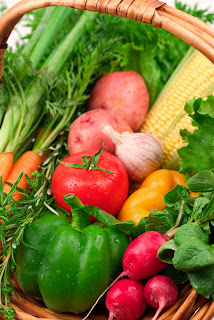People have been saving seeds as long as people have been gardening. Before there were stores on every corner where you can buy seeds and plants, saving seeds was the typical way gardeners would prepare for next year's crop.
Why Save Seeds?
So why would I want to save seeds each year if it's so easy to just go to the store and buy seeds or plants?
The main reason is that you have a plant that you love and you want to have it again next year!
What Types Can I Save?
The seeds that are best for saving are heirloom, self-pollinated or open pollinated plants.These are the only varieties that will be exactly like the parent plant. Self-pollinated plants are the easiest to save and include: Beans, Peppers, Chicory, Endive, Lettuce, Peas, & Tomatoes.
Other types of plants are likely a hybrid. Saving seeds from these plants will not result in a plant exactly like the parent but will have traits from it. So if you are looking for something different this would be a good way to go.
Choose the Best
 A rule of thumb is to always save the seeds from the best quality plants. Pay attention to which plants were the most productive, disease resistant and produced great blooms, fruits, or vegetables.
A rule of thumb is to always save the seeds from the best quality plants. Pay attention to which plants were the most productive, disease resistant and produced great blooms, fruits, or vegetables. How do I Save the Seeds?
Depending on what type of seeds you are trying to save there are several different methods. If you are dealing with beans, flowers, broccoli, lettuce or any other plant where the seed pods dry on the plant, you can catch the seeds by placing small bags over the seed heads. Another way to do this is to pull the plant out of the ground just before the seeds are completely dry and storing the plants upside down in a paper bag.
If you are harvesting seeds from vegetables such as peppers, eggplant, tomatoes, or squash where the seeds are inside of the vegetable or fruit, you will need to let the vegetable sit until they are far past the edible stage. When the seeds are then ready you can simply scoop out and dry the seeds. Tomatoes are different though and require a wet processing method that you can look up.
Storing the Seeds:
There are several things to remember when you are storing the seeds:
1. The seed must be dry, remove as much chaff as possible
2.They must be stored in a dark, dry place at a temperature between 32 and 41 degrees Fahrenheit. [your refrigerator!]
3. Store them in individual paper packets that are labeled.
4. These paper packets need to be stored in tightly sealed glass containers [ you can store the paper packets together!]
5. Adding a small amount of silica-gel desiccant to each container helps to absorb moisture and keep the seeds dry.
6. Use these saved seeds the following year for best results


No comments:
Post a Comment